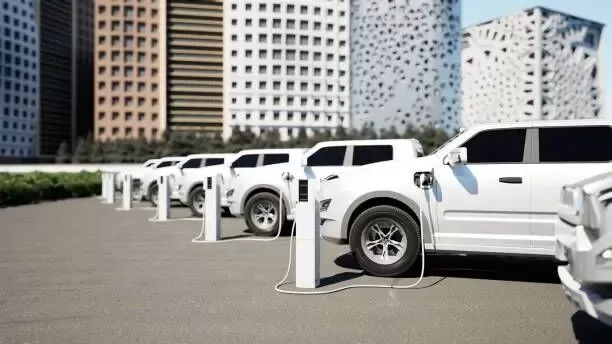Notifications

7 minutes, 57 seconds
-2 Views 0 Comments 0 Likes 0 Reviews

Topper Company is a professional EV charger manufacturer in China, providing dependable electric vehicle charging stations and comprehensive solutions.
As the global transition toward electric mobility accelerates, the demand for reliable, efficient, and scalable EV fleet charging infrastructure is growing rapidly. Fleet electrification is no longer a distant goal—it’s a present-day priority for commercial operators, government agencies, logistics providers, and transit systems.
Unlike individual EV charging, fleet charging involves the simultaneous, often time-critical, charging of multiple vehicles. This demands a well-planned, centralized infrastructure that minimizes downtime, reduces operational costs, and supports long-term sustainability targets.
Driven by favorable policies, rising environmental awareness, and advances in battery technology, businesses are rapidly converting to electric fleets—creating an urgent need for robust EV charging strategies.
There’s no one-size-fits-all approach to EV fleet charging. The ideal solution depends on fleet size, daily usage patterns, vehicle types, and operational logistics. Broadly, fleet charging can be categorized into three models:
Overview: Chargers installed at a company’s facility (depot, warehouse, parking lot) dedicated to the fleet.
Benefits:
Full control over charging times, energy usage, and access.
Reduced operating costs over time with scheduled or overnight charging.
Predictable vehicle availability and minimized downtime.
Considerations:
Requires significant upfront investment.
May involve permitting, grid upgrades, and space planning.
Ideal for fleets that return to base daily (e.g., delivery vans, buses).
Overview: Use of third-party charging stations spread across public locations.
Benefits:
Flexible and convenient for mobile fleets and rideshare operations.
No infrastructure investment required by the fleet owner.
Readily accessible across service areas.
Considerations:
Higher energy and usage costs.
Potential wait times or charger availability issues.
Charging speed and connector types may vary.
Overview: Employees charge company EVs at home using residential chargers.
Benefits:
Cost-effective and convenient for employees.
Eliminates need for centralized infrastructure in distributed fleets.
Reduces congestion at company facilities.
Considerations:
Requires reimbursement for electricity usage.
Not all homes have adequate electrical setups.
Less visibility and control for fleet managers.
As electrified fleets expand, charging systems must evolve to meet rising energy demands and operational complexity. Investing in smart, scalable charging infrastructure enables fleet operators to:
Optimize uptime by scheduling and prioritizing charging sessions.
Reduce costs through off-peak energy use and load management.
Adapt to future growth with modular and upgradable systems.
Streamline maintenance through predictive diagnostics and remote monitoring.
The integration of intelligent software and data analytics transforms EV charging from a basic utility into a strategic operational asset.
Choose charging levels based on your vehicle types and duty cycles:
AC Level 2 (7–22 kW): Suitable for light-duty or overnight charging.
DC Fast Charging (50–350 kW): Ideal for medium- and heavy-duty fleets or those needing rapid turnaround.
✅ Pro Tip: Ensure your EVs can accept the charger’s maximum output. Over-specifying adds cost without benefit.
Choose systems that grow with your fleet. Look for:
Open communication protocols (e.g., OCPP).
Modular charging hardware.
Expandable electrical infrastructure.
Smart chargers offer:
Dynamic load balancing to prevent grid overload.
Remote diagnostics and control.
Data integration for energy tracking and reporting.
Integration with fleet management systems and renewable energy sources further enhances efficiency and sustainability.
Match the number and type of charging ports with your fleet:
CCS, CHAdeMO, J1772, or NACS depending on vehicle compatibility.
Plan for simultaneous charging, mixed-fleet support, and redundancy.
Chargers should be:
Easy to operate with touchscreens, mobile apps, or RFID authentication.
Supported by real-time status updates and alerts.
Factor in:
Equipment and installation costs.
Long-term maintenance and energy pricing.
Available rebates, tax credits, and utility incentives.
📈 A clear ROI emerges when factoring in reduced fuel costs, lower maintenance, and regulatory benefits.
Outdoor or rugged fleet environments require:
Weatherproof enclosures (look for IP ratings).
UV protection, impact resistance, and temperature tolerance.
Tailor infrastructure to your specific use case:
School buses: Overnight charging in depots.
Delivery fleets: Mid-day top-ups with DC fast chargers.
Government fleets: Budget-conscious, scalable AC solutions.
Before deployment, fleet managers should assess:
How many vehicles need to charge at once?
What are the vehicle duty cycles?
Can the site support overnight or high-speed charging?
What is the site's current electrical capacity?
Will solar, battery storage, or backup power be integrated?
Answering these helps plan layouts, grid upgrades, and partnerships with utilities or energy service companies.
Advanced fleet platforms now offer features that go beyond tracking vehicles:
Automated off-peak charging to reduce utility bills.
Predictive maintenance alerts based on charging behavior.
Real-time SOC tracking and charging station mapping.
ESG reporting tools for emissions reduction and sustainability metrics.
These tools unlock operational efficiency, lower costs, and improve decision-making across the fleet lifecycle.
Fleet electrification is reshaping how organizations approach mobility, logistics, and energy management. Whether deploying private depot chargers, tapping into public networks, or enabling home charging for employees, the charging solution you choose must be intelligent, scalable, and aligned with operational needs.
The right infrastructure is more than a power source—it’s the foundation for cost-effective, low-emission, high-performance fleet operations. As the world embraces electric mobility, early adopters who invest in future-ready charging strategies will lead the transition to cleaner, smarter transportation.Know more about Google SEO Directory
China EV Chargers EV Charger Manufacturer EV Charging Solutions

